|
|
 |
The VIBRATIONS range of Hi-Tech Education equipment enables clear and comprehensive learning of VIBRATIONS covering a variety of theories and topics. An understanding of the way in which materials and components react to excitation, is fundamental when studying the application of loads on a variety of fixed structures and rotating machinery. The VIBRATIONS range forms a comprehensive range of equipment, from simple pendulums, beam vibrations to complex structural vibrations. All are suitable for demonstration and experimental work.
All the VIBRATIONS hardware operates in a standalone mode, with some being supplied with Data Acquisition Interfaces and Software.
HVT1 Simple PendulumA simple pendulum consisting of a cord with a ring at the top end and a sliding pendulum mass. |
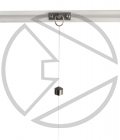 |
HVT3 Compound PendulumA wall mounted bracket has a metre long bar suspended from its knife-edge pivot point. Attached to the pendulum bar is a movable mass. The mass can be fixed along the pendulum bar in seven positions. |
|
HVT2 Reversible PendulumThe reversible pendulum consists of a rigid metal bar with two pivot points, one near each end of the bar. It can be suspended from either pivot and swung. The two pivots are adjustable on the rigid metal bar and this allows the periods of swing to be adjustable. In use, it is swung from one pivot, and the period timed, and then turned upside down and swung from the other pivot, and the period timed. |
 |
HVT9 Torsional Vibration ApparatusThe equipment provides a basic range of torsional vibration experiments. A wire rod clamped in a wall mounted bracket has a heavy disc attached to the lower end. A solid ring can be located over the disc to increase its inertia. Steel and brass rods of two different diameters are included. All brackets, clamps and adapters are supplied. |
 |
HVT11 Vibration of a Spiral Spring
Spiral springs are used to provide a restoring torque to an oscillating shaft when it rotates through an angular displacement. With this apparatus the student can easily calculate the theoretical simple harmonic motion of the spring, and compare the value with experimental results. The wall mounted unit consists of a spiral spring coiled from a length of steel strip creating an effective length, attached to a shaft mounted in ball bearings. A cord carrying a load hanger is wound around the shaft, and a load applied to twist the spring. Spring deflection is measured with an attached 360° scale. A cord and load hanger is supplied. A set of inertia discs is supplied which can be attached to the shaft to change the frequency of oscillation, measured by the stop watch provided. |
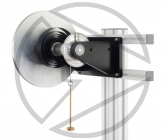 |
HVT12c Beam Bending (Transverse) Vibration ModuleExperimental module for the vibration analysis of transverse beam bending. The apparatus consists of two end fixings that support a beam. One end allows beam rotation only, whilst the other end allows rotation and horizontal movement only. The beam is forced to vibrate using a clamp on motor exciter supplied. This exciter operates from a high speed motor and has two eccentric masses attached at either end of the motor shaft. The rotation of the masses induces the excitation frequency of the beam. Additional masses can be added to the motor exciter to change the experimental parameters. The vibration of the beam is monitored using the sensor of the HAC190. The HAC190 optional accessory is required to
control the speed of the motor exciter and the
HVT12k optional accessory to display the excitation
frequency and output frequency. Optional Accessories: HAC190, HVT12k, HVT12f |
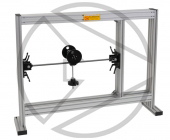 |
HVT12d Vibration AbsorberExperimental module, which fits into the HVT12f Vibrations frame (not supplied) making up part of the HVT12 Universal Vibration Apparatus. |
 |
HVT12e Vibration Sensors with Fixing Kit, Interface & SoftwaSensor and clamping kit for use on some of the linear and torsional vibrations apparatus within the Hitech range. Two sensors supplied; Linear non-contact position sensor and contacting angular position sensor. |
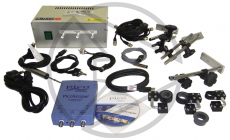 |
HVT12f Vibrations Frame
The HVT12f Vibration Frame offers the ideal working frame for all of the HVT12 Universal Vibration experiment modules. Manufactured from high quality, ergonomic aluminium profile, it comprises solid side profiles for rigidly mounting experiment components. Dual upper and lower members create internal working dimensions of 1.22m x 0.76m for mounting experiments. Profile grooves create an accurate alignment of experiment components, and pre-assembled fasteners are integrated into the grooves for assembling of specific experiments within the HVT12 range. The HVT12f Vibrations Frame comes fully assembled with no need for tooling or lengthy assembly. |
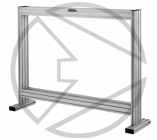 |
HVT12g Free and Forced Vibrations
A rectangular steel cantilever beam pivots at one end from a bracket and bearing. A spring is attached to the free end of the beam. The horizontal position of the beam can be adjusted. Beam displacement is measured using the sensor of the HAC190. The beam vibrates freely by displacing the free end by a known amount between the two bump stops provided. Alternatively the beam can be forced to vibrate using the HAC120 Motor Exciter. The motor exciter has integral imbalanced masses, which when rotated excites the beam to vibrate. The frequency of the beam excitation is controlled and displayed using the HAC190 speed controller and tachometer. A set of calibrated weights are supplied to vary the weight being vibrated. Damping is introduced onto the beam using a set of damping discs and damping tank. Input and output excitations can be viewed using the optionally available HVT12k Data Acquisition Interfaceand software Optional Accessories: HAC120, HAC190, HVT12k, HVT12f |
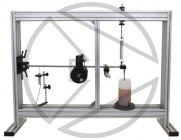 |
HVT12h Mass Spring System
A single open helical spring is mounted inside the HVT12f Vibrations Frame and free to vibrate vertically through a linear bearing guide. Loading is achieved through the use of various masses. Masses are added to the lower end of the spring to vary the frequency of oscillation. Frequency, periodic time and deflection can be measured. An upper adjustment system allows the springs vertical position to be varied and thus its deflection increased and decreased. Full technical instruction manual included detailing apparatus assembly, operation, and theory and example results. |
 |
HVT12k Data Acquisition SystemThis unique and compact Data Acquisition System is an essential accessory for the HVT12 Universal Vibrations Apparatus experiments. When connected to the relevant experiment and its sensors, the system allows measuring, capturing, storing and analysing of experiment data. |
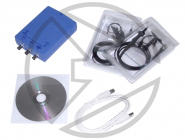 |
HVT13 Torsional Vibration Apparatus
This bench top mounted unit is used to study torsion and torsional vibration. The apparatus is constructed around a profiled aluminium base onto which are mounted 4 vertical chuck pillars. Each pillar contains a central shaft running in precision bearings with a chuck at one end which grips a torsion specimen. Each chuck also contains a large disc of varying mass and inertia. With these chucks it is possible to assemble a torsion specimen with up to 3 masses. Vibrations are transmitted into the torsion specimen by means of an exciter, which is electronically speed controlled from the main control unit. Angular movement sensors on the chuck pillars provide the amplitude of vibration as an electrical signal. The control unit conditions these signals and makes them available to view on the HVT13k Data Acquisition System. Static twist of the specimen is achievable using the attachable protractor, pointer, hanger and calibrated weights supplied. Optional Accessories: HVT13k |
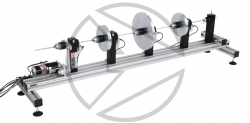 |
HVT14 Spring Mass Vibration System
The floor standing unit is used to analyse the oscillations of a spring mass system. The sturdy base secures two vertical guides. A top horizontal bracket keeps the bars at a near constant width which aids the running of a cradle up and down the bars. The cradle runs on integral precision bearings which creates minimal friction. The cradle attaches to one end of a helical tension spring of known wire diameter, free length and spring rate. At the other end of the spring an adjustable screw mechanism adjusts the length of the spring and hence it’s starting position. The cradle has its own self weight, but additionally a number of calibrated weights can be added to the cradle in order to vary the oscillating mass. The cradle vertical motion is transferred to a rotating drum recorder mounted with paper. The paper can be removed after testing to undertake further analysis. The oscillations of the cradle can be free or damped. The damped option requires the damper to be attached to the cradle. |
 |
HVT20 Stability of Structures Apparatus
This apparatus enables a number of simple models, each with a single degree of freedom to be assembled. Each of the models constructed will exhibit a specific type of behavior which because of the extensibility of the springs is not limited to the linear load/deflection range common in most laboratory equipment. Students also have sufficient flexibility to devise and construct their own models. In this way an understanding of the non-linear stability behavior of thin structures may be achieved along with the analysis of the buckling of practical structures. A model strut consisting of two rigid links connected by a pinned joint is mounted in a test frame with a fixed pin at one end and a pin free to move axially at the other. The rigidity of the strut is achieved by attaching various linear coil springs or a torsion spring to the centre pin or the free end. The free end is constrained by a loading yoke that is guided by linear bearings running on parallel rails. The central joint is fitted with a trunnion to which loading cables are connected. One cable includes a strain gauged load cell to measure the net force being applied. The signal from the strain gauge load cell is fed into the Data Acquisition Interface supplied. The set of weights needed for the experiment is provided. |
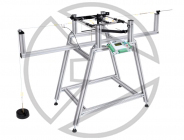 |
HAC90 TachometerA bench top unit that operates in conjunction with the HVT12 Universal Vibration System. This unit display the excitation frequency (in Hz) of the motor exciter being used to excite the beam. This module will operate with both the HAC120 (sold separately) and motor exciter from the HVT12c (supplied with HVT12c). The digital display shows the excitation frequency in units of Hz and to a resolution of 1 decimal place. |
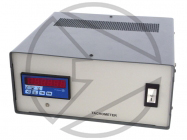 |
HAC110 Speed ControllerThe HAC110 makes up an essential control component of the HVT12 Universal Vibrations Apparatus. It connects directly to the HAC90 – Tachometer (sold separately) and also the HAC120 – Motor exciter (sold separately) and motor exciter of the HVT12c (sold as part of HVT12c experiment module). |
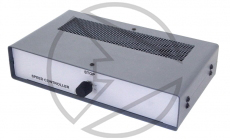 |
HAC120 Motor ExciterThe HAC120 exciter motor is an essential part of the HVT12 Universal Vibration Apparatus (sold separately). Its primary function is to transmit rotational motion into linear displacement of a beam, and hence force the beam to vibrate at varying amplitudes and frequencies. |
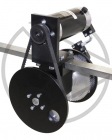 |